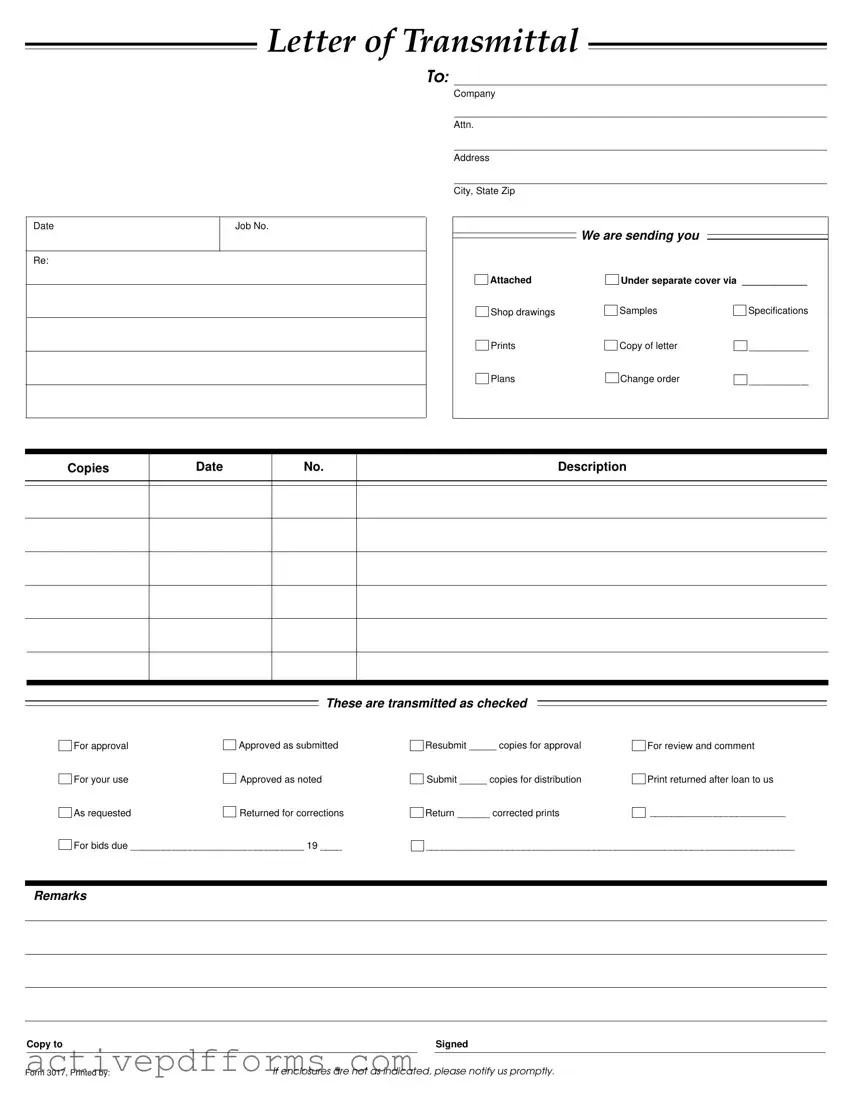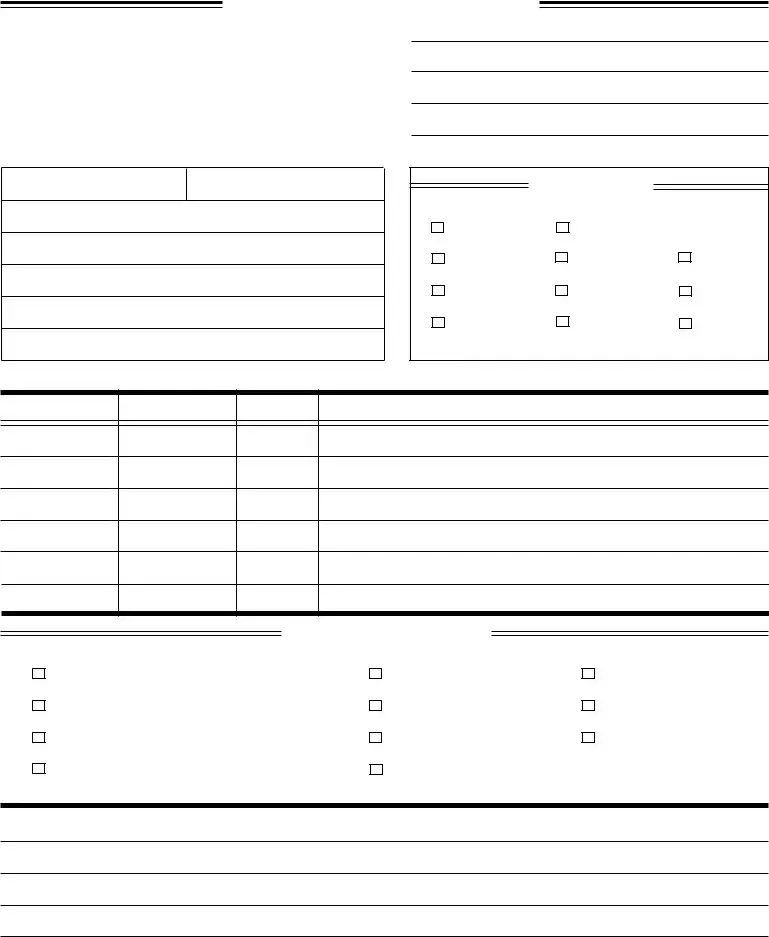Free Transmittal PDF Template
A Transmittal Form serves as a critical document in the professional and business sector, facilitating the formal process of sending or transferring documents, plans, samples, or other items for various purposes such as approval, review, or correction. This form typically outlines the specifics of what is being sent, including the method of transmission, a detailed description of the contents, and instructions for the recipient on how they are to proceed upon receipt. Essential for clear and effective communication between parties, the transmittal form ensures that all items are accurately documented and processed in accordance with the sender's intentions.
Edit Transmittal Now

